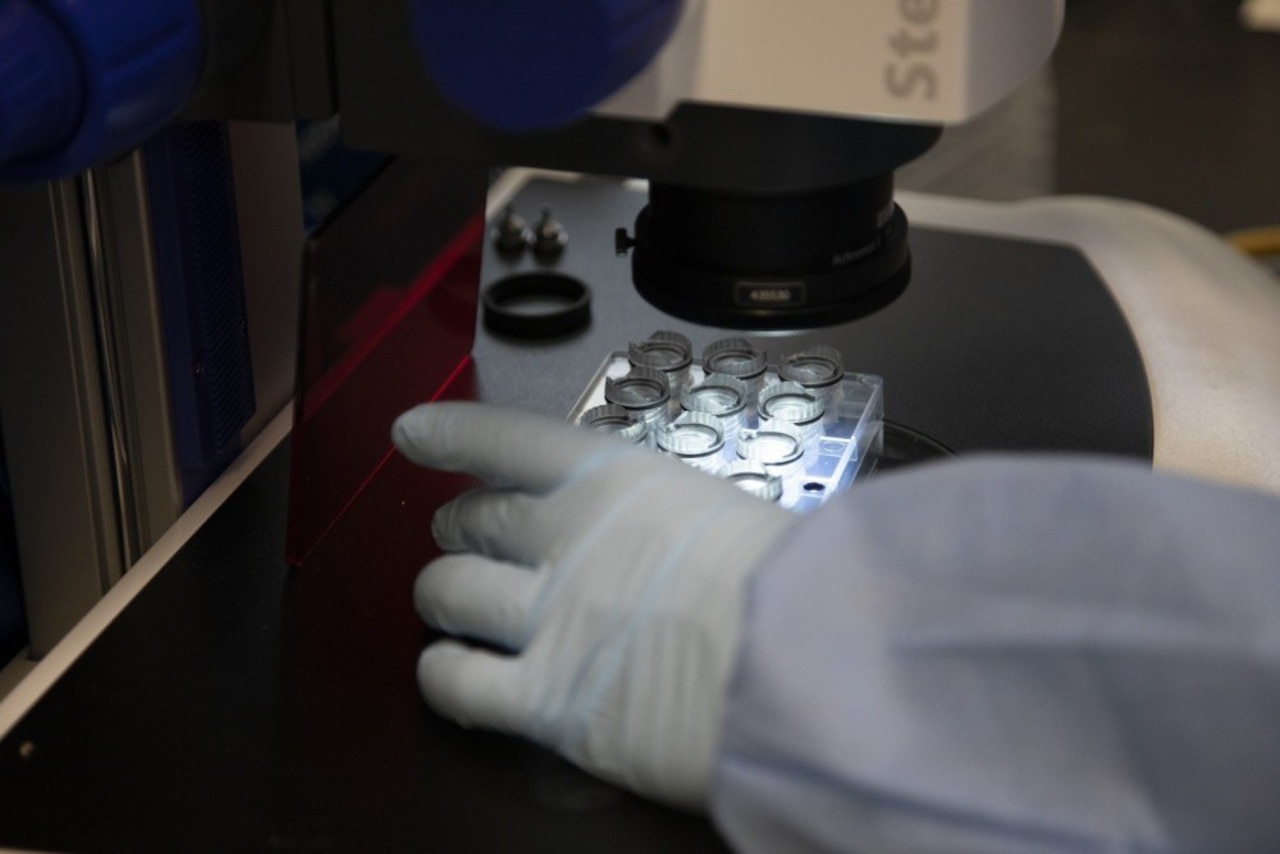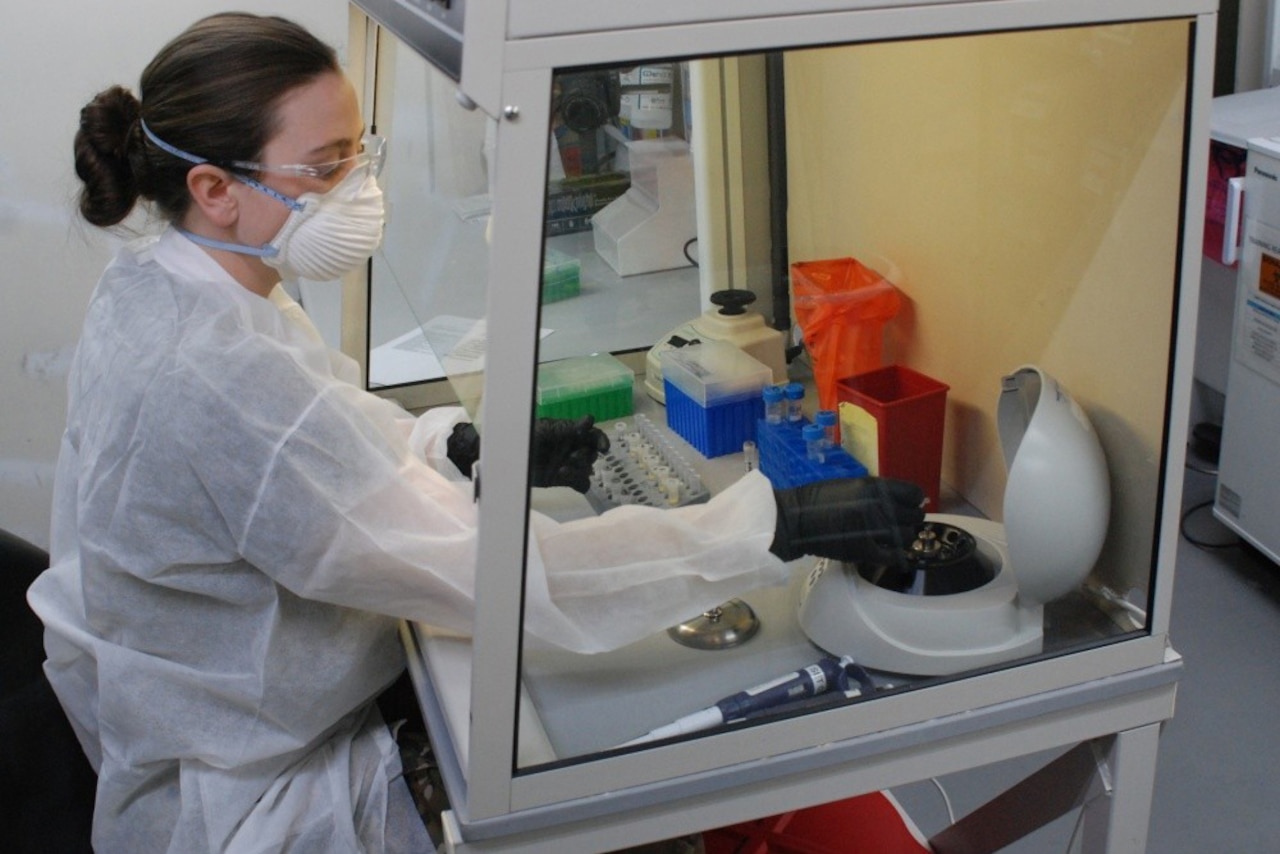The global race to field a lifesaving COVID-19 vaccine may be nearing its last lap, as the Army aims for a vaccine by the end of this year, the force's top medical research officer said.
If all goes as planned, human testing will begin in late summer, Army Brig. Gen. Michael Talley, commander of the Army Medical Research and Development Command, told reporters yesterday. He added that he anticipates widespread distribution of a vaccine next year.

To do this, Army researchers are following the science, he said.
However, when you follow the science, that lets science take charge of the timeline, said Col. Wendy Sammons-Jackson, director of the Military Infectious Disease Research Program at MRDC.
"It's reasonable to expect some form of a vaccine available by the end of the year," Sammons-Jackson said. "As long as we're able to continue to progress, learn, understand and adapt, I think we have all of the resources available and pointed in the same direction that can make [our timeline] possible."
Although advances have been made, and goals are set, "we're in the learning phase with every aspect of this, whether it’s the development of treatments or vaccines — it's a constant learning process," said Dr. Nelson Michael, director of the Center for Infectious Disease Research at the Walter Reed Army Institute of Research.
That's why scientists around the globe, including the Army, are simply doing their best to keep up with the complex virus, he added.
"We're learning the science of [COVID-19] faster than we have learned the science of any other virus before," Michael said. "We're going from a concept, all the way to Phase 3 clinical trials and potentially licensure in an unprecedented timeline — but in this case, it's very much possible."
In January, after the virus' genetic makeup was published, the more than 700 Army scientists, researchers and staff at the U.S. Army Medical Research Institute of Infectious Diseases at Fort Detrick, Maryland, began working day and night to develop medical countermeasures against COVID-19.


The Walter Reed team also started racing against the clock to develop a vaccine candidate to beat the novel coronavirus. "We are moving at top speed at both labs and yielding promising results," Talley said regarding USAMRIID and WRAIR. At Fort Detrick, they are safely replicating the virus to support countermeasure development. Meanwhile the team at WRAIR has designed a unique COVID-19 candidate, he said.
USAMRIID is also developing small- and large-animal models to support testing of vaccines, diagnostics and therapeutics developed by the Army and its collaborators.
"We have been vaccinating hundreds of mice with different versions of our vaccine, and we will be making a decision as to which one is the best to take forward for manufacturing next week," said Dr. Kayvon Modjarrad, director of the Emerging Infectious Diseases Branch at WRAIR, "then, ultimately, clinical trials by late summer."
"Based on the data obtained this summer, we'll know which vaccine candidates to move forward with for larger trials toward the end of the year," Michael said.
Prior to the COVID-19 response, Michael's previous global health contributions include the Military HIV Research Program, or MHRP. His team was instrumental in the globally effective HIV-1 vaccine.
"Our team is fully engaged in the governmental structure called Operation Warp Speed," Michael said.

Operation Warp Speed, an initiative first announced by President Donald Trump and with Army Materiel Command at the helm, brings together experts from across the government to determine a vaccine for COVID-19 and distribute more than 300 million doses across the United States.
"We cover [everything] from therapeutics, diagnostics and vaccines," Michael said. "But for our specific work in vaccines, we're heavily engaged across all agencies [where] the Army and Defense Department's capabilities and competencies with vaccine development can be brought to bear."
What this means is that they're not only testing potential vaccines invented during the intramural program, he said, but they have the capability to also do pre-clinical and stage-1 testing of potential vaccines outside of their laboratories.
In addition to WRAIR and USAMRIID, many unique subordinate commands are using their assets to support the overall government response to the virus, Talley said. "For example, in Natick, Massachusetts, at the U.S. Army Research Institute of Environmental Medicine, researchers are developing wearable technology to [recognize] key early symptoms of COVID-19."
To date, COVID-19 has killed more than 370,000 people worldwide, including more than 100,000 in the United States.
"U.S. Army researchers were critical during the SARS epidemic, the Zika virus, and the Ebola outbreak as they helped develop antivirals and vaccines," Secretary of the Army Ryan D. McCarthy said in April. "They've done it before, and they will do it again."
Content Original Link:

